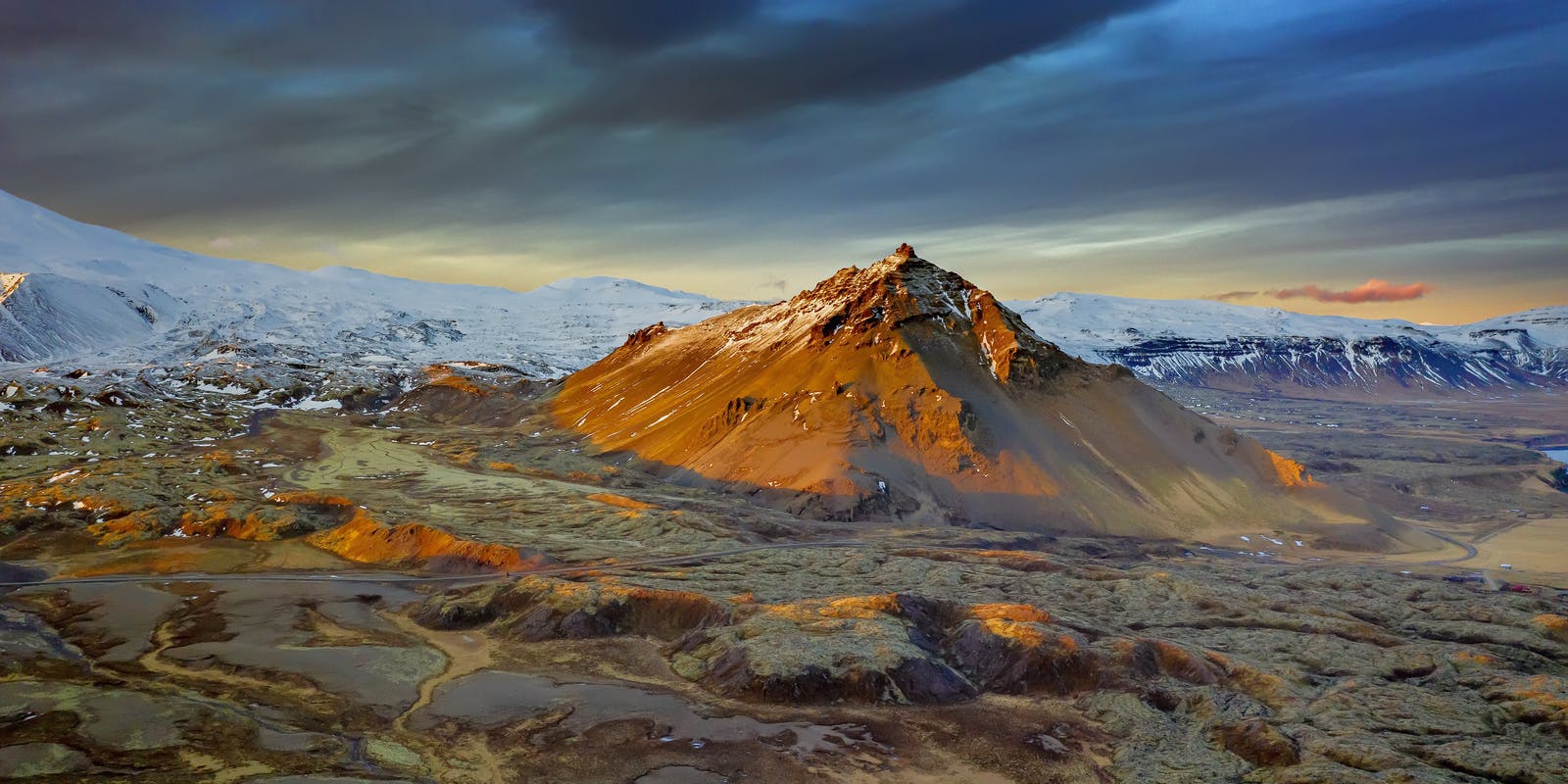
Guide to Snæfellsjökull National Park
Snæfellsnes is considered the jewel of the western coast of Iceland, partly because the area has a taste of everything: mountains, glaciers, hiking trails, and charming villages. Many Icelanders refer to the area as “Iceland in miniature.”
Attractions to Visit at Snæfellsjökull National Park
The national park is a beautiful slice of west Iceland that offers numerous attractions that travellers love to visit and photograph. Below are just a few highlights of the many sites that are located within the park.
Arnarstapi
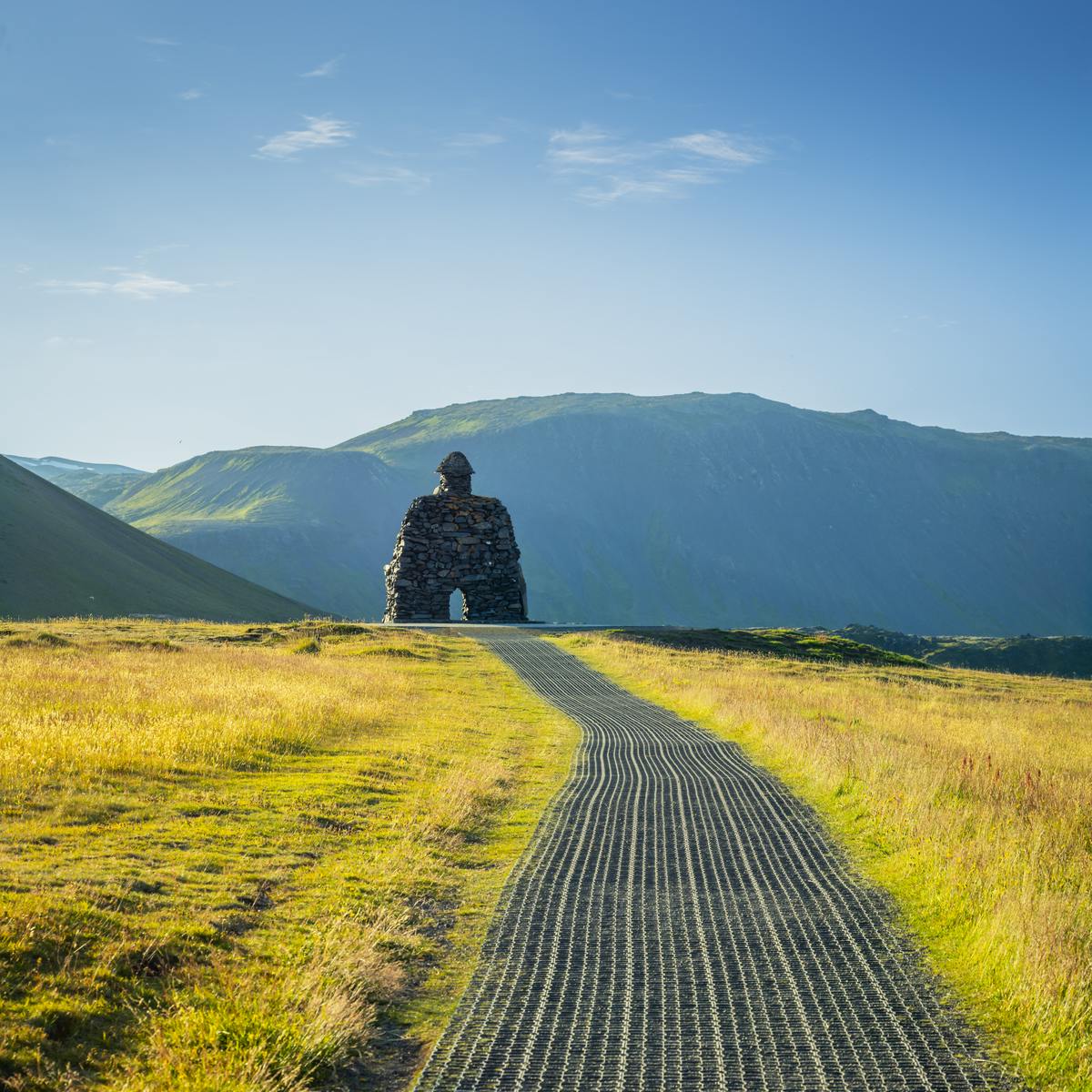
The seaside cliffs in the small fishermen’s town of Arnarstapi, at the gateway to Snæfellsjökull National Park, are spectacular, with basalt formations including holes and arches carved out by the power of the ocean. The cliffs are a nesting ground for the Black-legged kittiwake and more species. The Artic tern is nesting along the shore and even inside the village, and you’ll love taking photos with a giant stone statue of Bárður Snæfellsás with its back to the ocean not far from the parking area. It’s a favourite among locals as well.
Hellnar
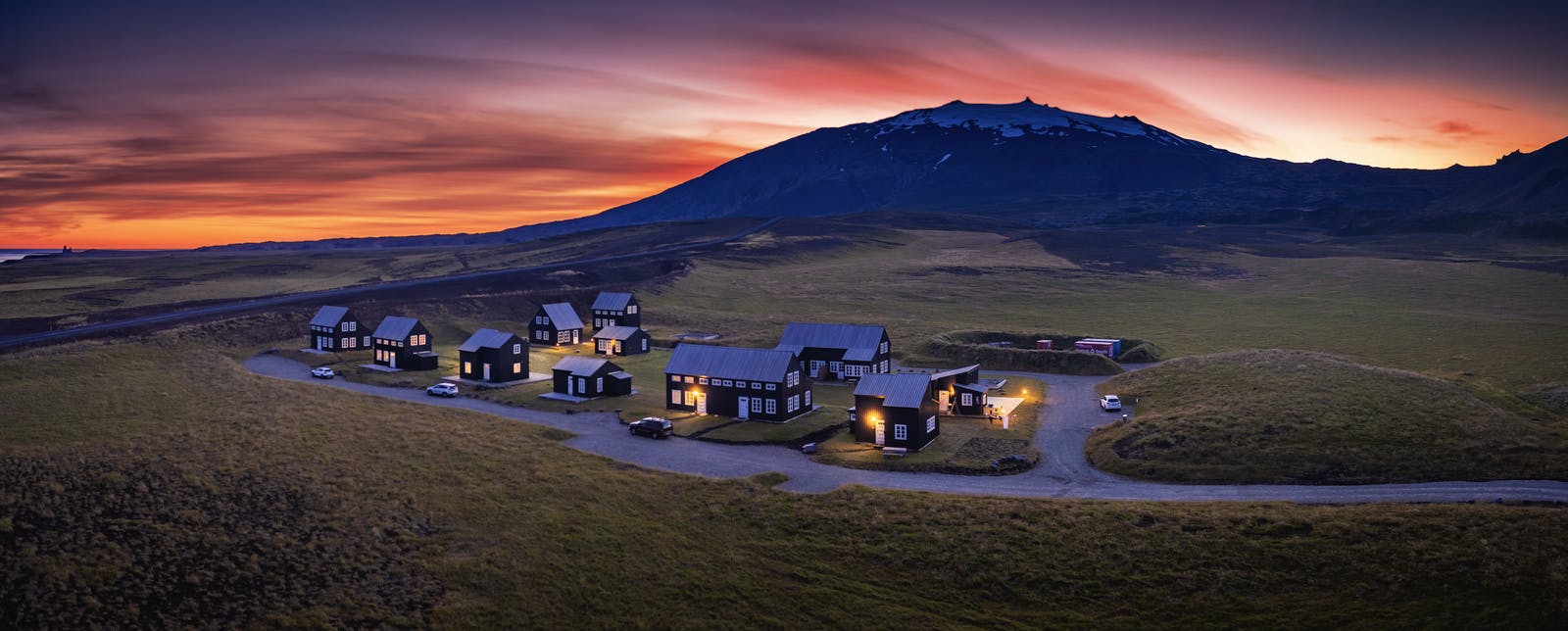
Just a few kilometres from the Arnarstapi Cliffs, Hellnar is another small fishing village with beautiful seaside rock formations. A 2.5 kilometre walking path connects the two cliff areas.
Snæfellsjökull Glacier

The Snæfellsjökull Glacier lies on top of a volcano, which is situated in the centre of the national park. The glacier’s peak is 1,446 metres tall, and it can be seen from Reykjavík on a clear day. The volcano is considered active, though the last eruption occurred 1,800 years ago. It takes centre stage in the 1864 literary classic Journey to the Center of the Earth by Jules Verne, which chooses the summit of Snæfellsjökull as the setting of a fictional passage to the centre of the earth.
Lóndrangar
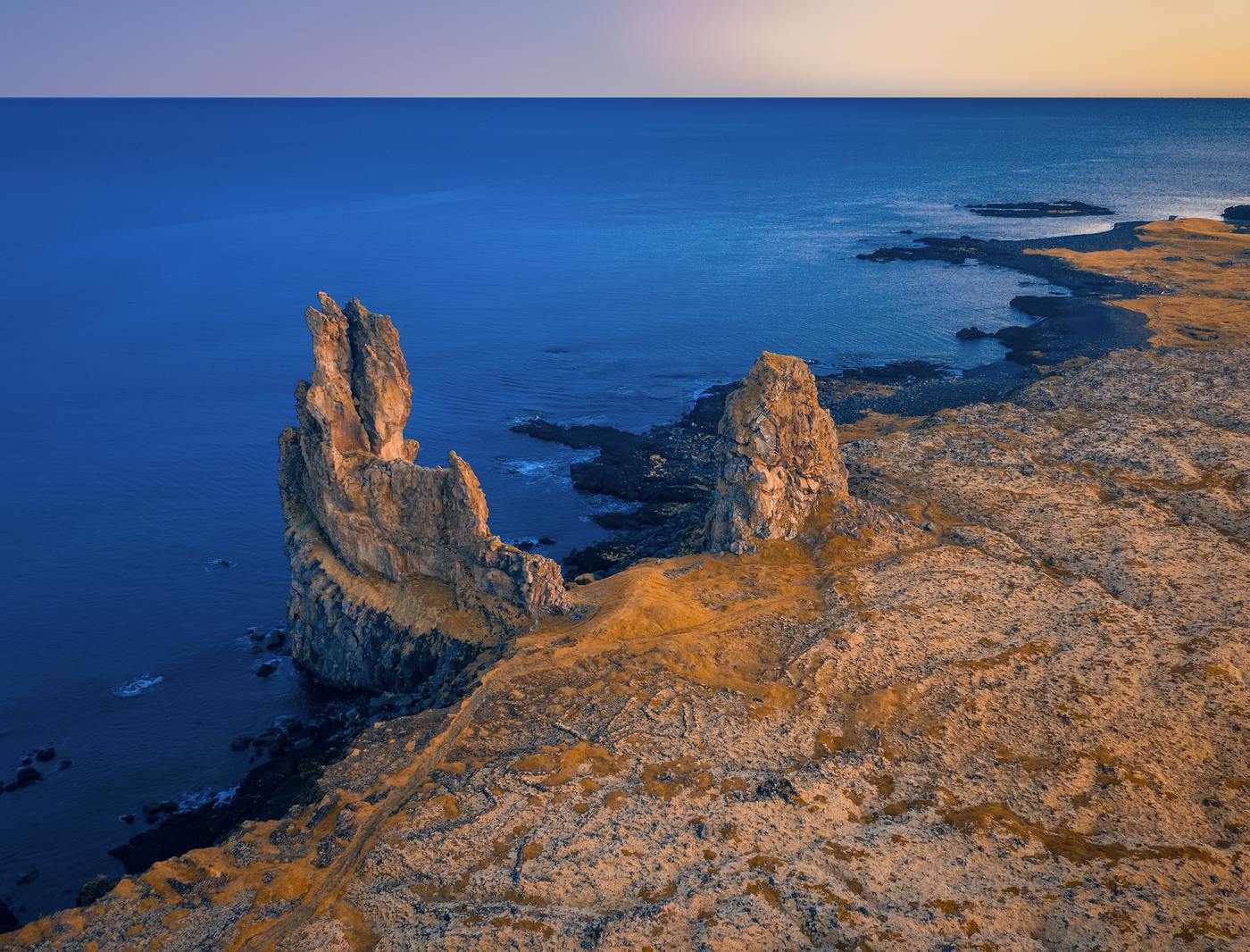
Yet another place to stop and have your breath taken away overlooking seaside cliffs is Lóndrangar, and in this case, they are basalt cliffs that are the vast remains of a crater eroded by the sea. Two stacks (the taller at 75 m, the lower at 61 m) are visible, home to puffins and fulmars in the summer months.
Vatnshellir Lava Cave
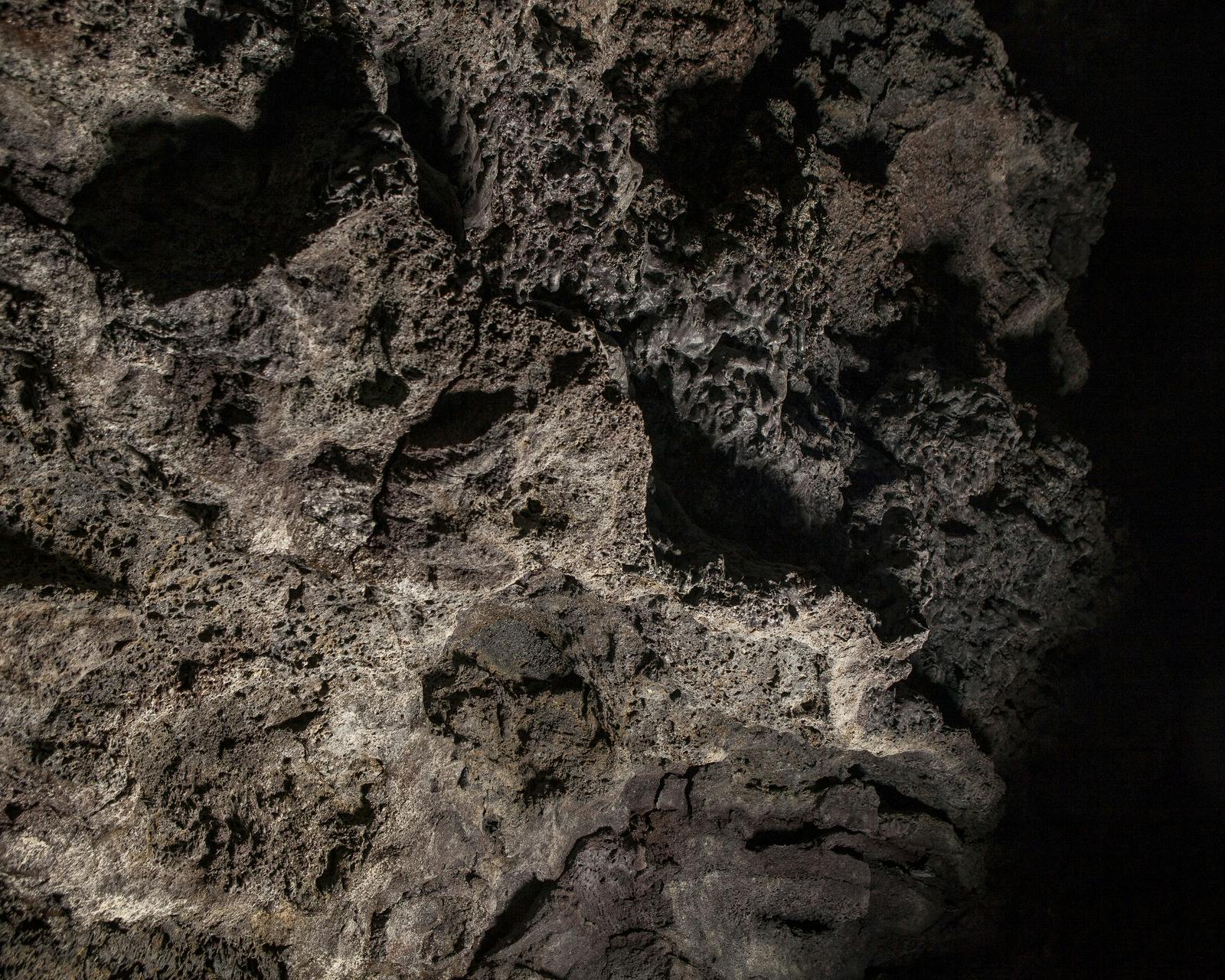
The Vatnshellir lava cave is another highlight. Scientists believe the 200-metre-long cave was created in an eruption 6,000-8,000 years ago. The cave has two main sections: the upper section, which showcases unique lava formations that are curved on the sides of the lava tube, and the lower part, which can be reached by a long and narrow but well-maintained staircase, and takes tourists about 35 metres underground to a place hidden from the outside world for thousands of years. The cave can only be accessed through a guided tour.
Djúpalónssandur
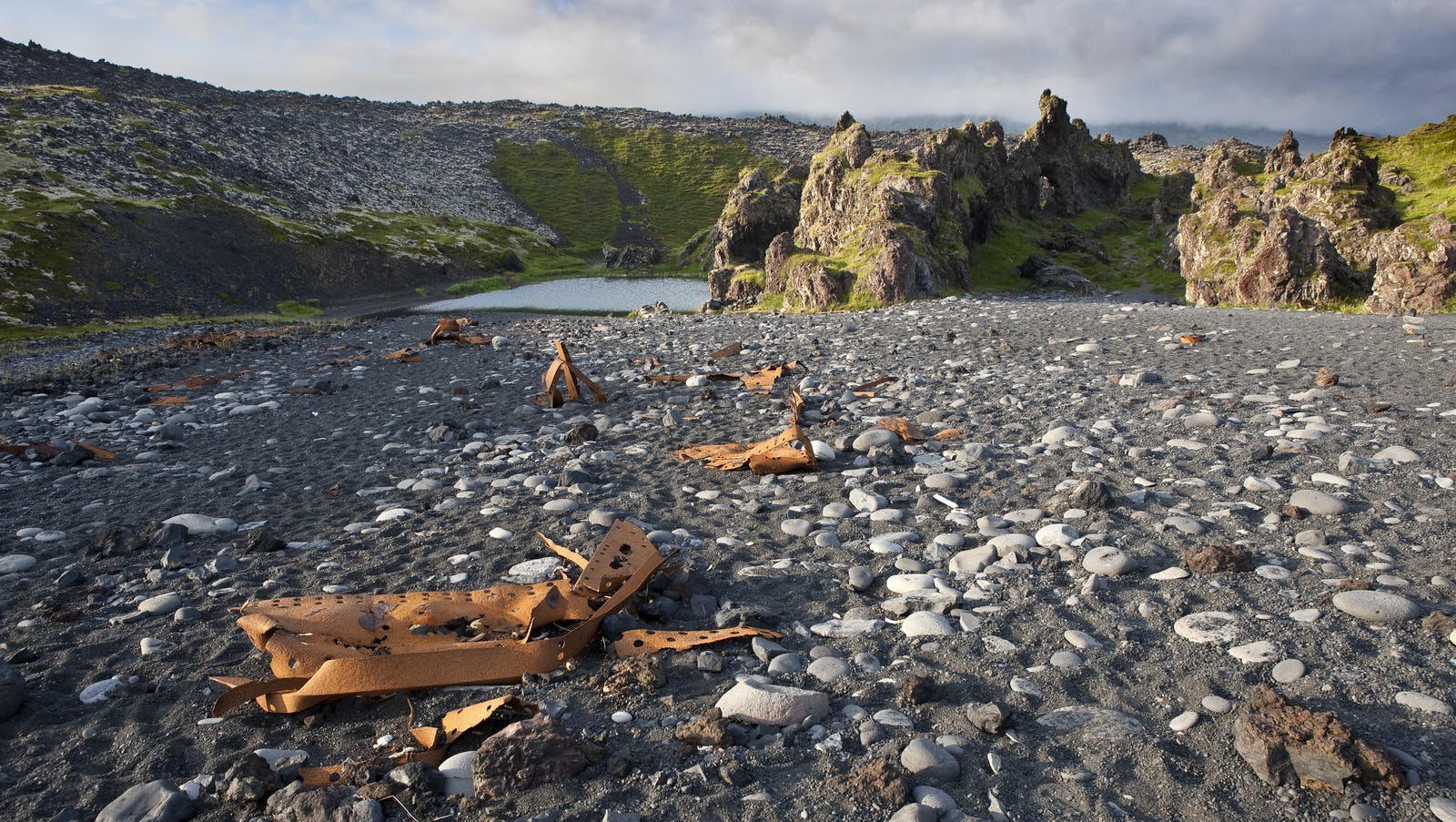
Djúpalónssandur is a beach on the southwestern edge of the Snæfellsnes Peninsula and one of the region’s highlights. The vast beach is covered by tiny black stones that were shaped by the force of the tides and fierce whipping winds. Visitors love to wander among the frozen lava landscapes and the interesting rock formations.
How to get to Snæfellsjökull National Park
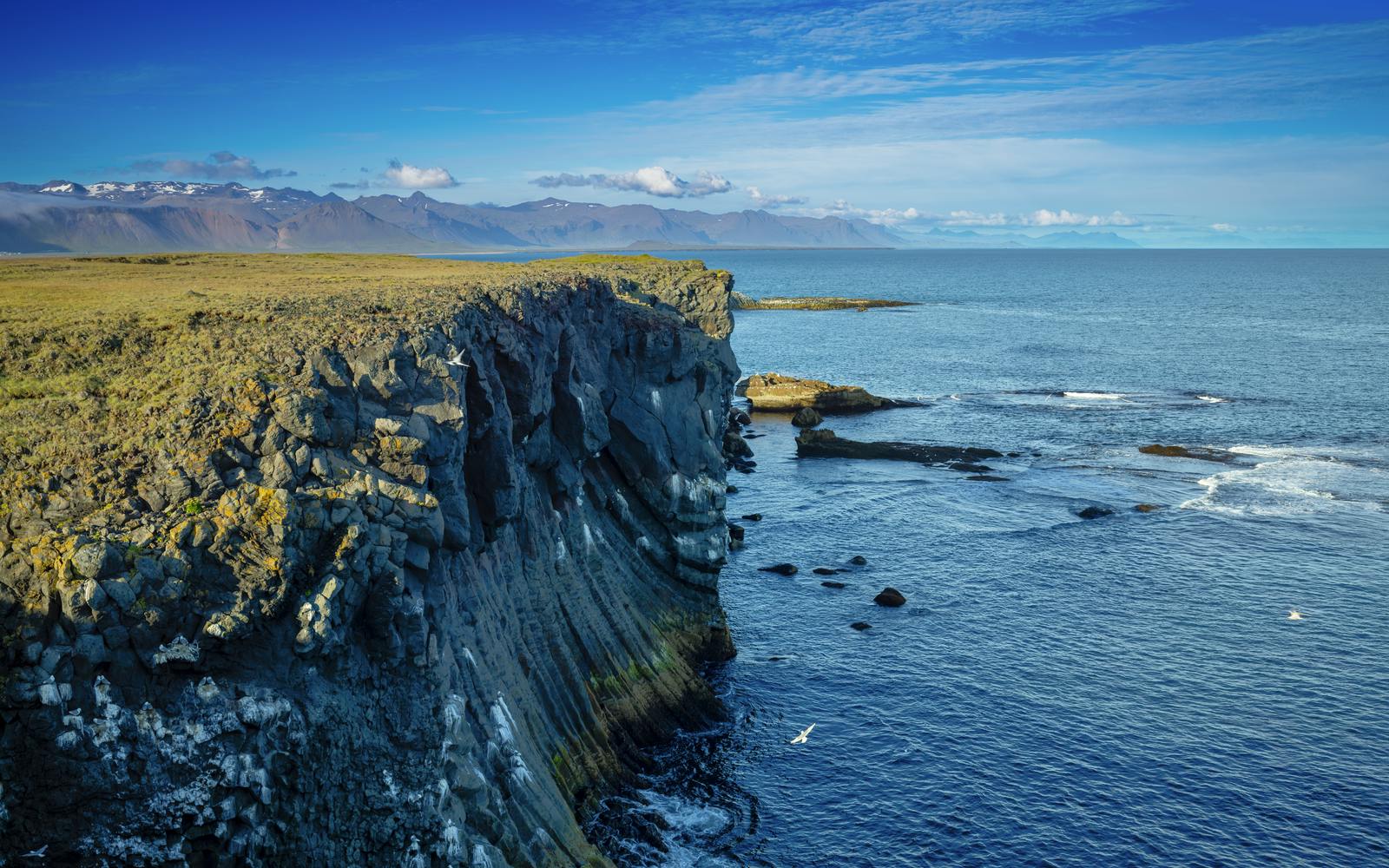
Driving is the most convenient way to reach Snæfellsjökull National Park if you are not planning to take a tour that visits the region. The national park is located on the Snæfellsnes Peninsula, approximately 120 kilometres straight line north west of Reykjavík and 200 km by the road.
You drive along Route 1 (Ring Road) until you reach the Snæfellsnes Peninsula. From there, you follow Route 54 to get to the national park. The journey takes around 2-3 hours, depending on the weather and road conditions.
Snæfellsjökull Visitor Centre
The Snæfellsjökull Visitor Centre is located within Snæfellsjökull National Park and has information about the region‘s geological features, natural history, and outdoor opportunities. There is an information desk, exhibitions, interactive presentations, a gift shop and restrooms.
FAQ
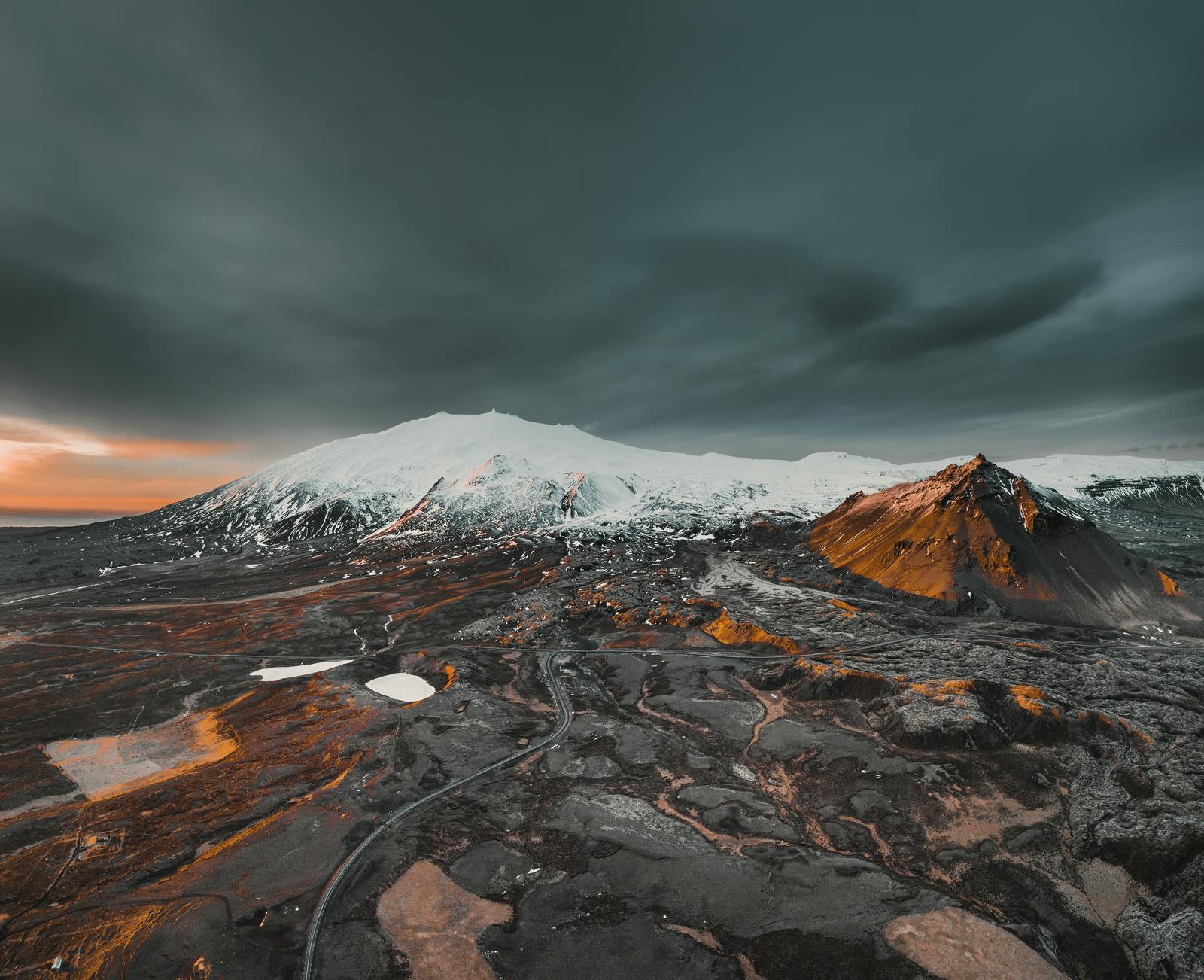
What’s the Best Time of Year to Visit Snæfellsjökull National Park?
Snæfellsjökull National Park is great to visit any time of year. It depends on what you want to see and do. The summer months give you long days of sunlight and milder temperatures, while the winter offers softer light and possibly frozen landscapes. The summer months are ideal if you are interested in hiking in the national park.
Can I Learn About Snæfellsjökull Anywhere in Reykjavík?
Perlan in Reykjavík has excellent exhibitions highlighting the unique geology of Iceland. Here, you can learn about Iceland's glaciers, ice caves, volcanoes, and geothermal energy, among other amazing geological wonders.
Located on Öskjuhlíð, Perlan is an ideal place to learn about Iceland’s natural wonders and also enjoy the observation deck, which offers panoramic views of Reykjavík. There’s also a restaurant, café, ice cream stand and gift shop.
How big is Snæfellsjökull National Park?
Snæfellsjökull National Park covers a total area of approximately 170 square kilometres. The park encompasses diverse landscapes, including the iconic Snæfellsjökull glacier, lava fields, cliffs, coastal areas, and lava caves.
How long does it take to visit Snæfellsjökull National Park?
It depends on how much time you have and what you would like to do. In addition to sightseeing, there are many opportunities for outdoor activities like hiking, glacier walks, horseriding, ATV tours and other activities. There are many hotels and guesthouses along the Snæfellsnes Peninsula, and many travellers like to spend multiple days in the region.
Where to go in Snæfellsjökull National Park in Iceland?
The region has numerous attractions like beaches, lava fields, sea cliffs, Snæfellsjökull Glacier and charming museums and fishing villages. There are also a lot of opportunities for outdoor activities like whale watching and hiking.
How do you pronounce Snæfellsjökull?
You pronounce Snæfellsjökull as Snaiy-fells-yo-cull. Practice some more Icelandic Pronunciations here.
How long does driving to the Snæfellsnes Peninsula take?
Snæfellsjökull National Park is located on the Snæfellsnes Peninsula, approximately 120 kilometres north west of Reykjavík and around 200 km by the road. You drive along Route 1 (Ring Road) until you reach the Snæfellsnes Peninsula. From there, you follow Route 54 to reach the national park. The journey takes around 2-3 hours, depending on the weather and road conditions.







